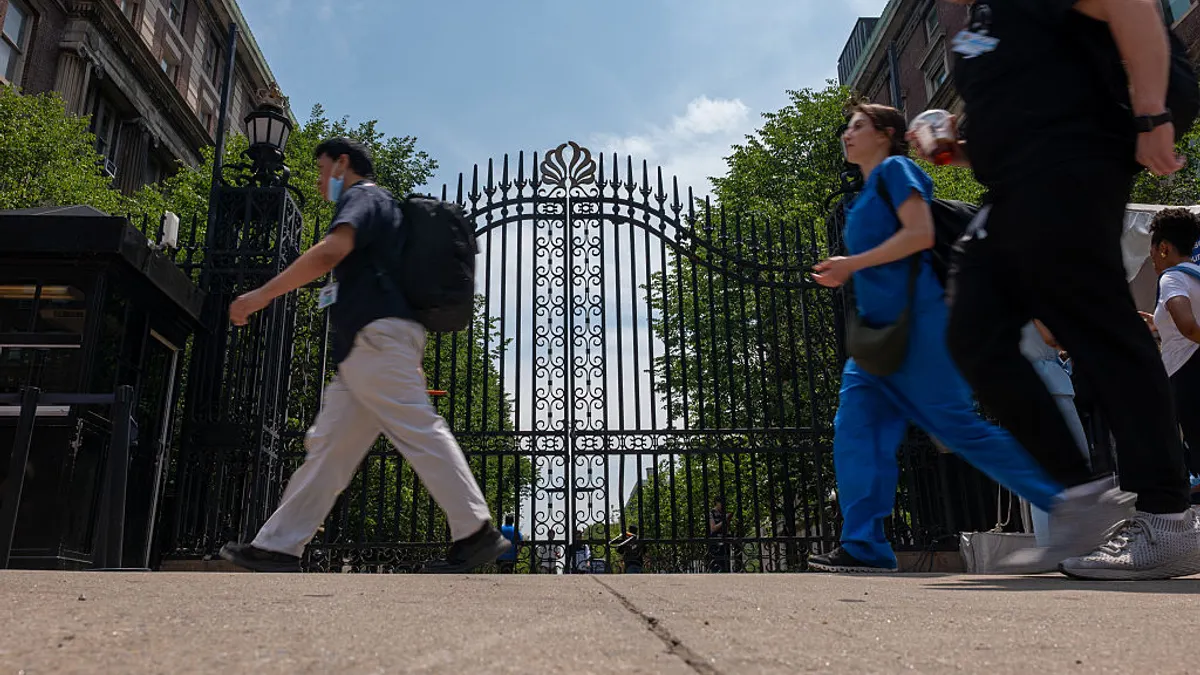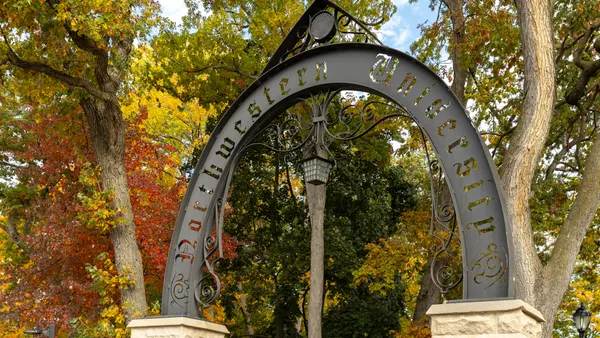Dive Brief:
- Ohio University plans to wind down 11 undergraduate programs and merge another 18 to comply with a new state law that sets minimum graduation thresholds. The university said Tuesday it would suspend admission to the programs upon receiving approval from the state higher education department.
- Signed in March, Ohio’s sweeping Advance Ohio Higher Education Act gave state colleges just months to determine which programs to cut. The law requires public institutions to eliminate any undergraduate program that issues fewer than five degrees annually over a three-year period.
- At Ohio University, 36 programs fell below the allowed threshold. Along with the programs it plans to cut and merge, the university said it will request waivers to keep operating another seven.
Dive Insight:
With the passage of the new legislation, also known as SB 1, Ohio lawmakers made deep inroads into the academic operations of public colleges, asserting new state controls over decisions historically left to faculty and administrators.
The law bans diversity, equity and inclusion training, requires post-tenure review, prohibits full-time faculty from striking and even requires certain questions in student evaluations of professors.
SB 1 also created a policy that could wipe out dozens or even hundreds of academic programs if the experience of Ohio’s neighboring state is any gauge.
In Indiana, a similar policy with programmatic graduation thresholds — inserted into the most recent state budget bill — has already put 75 degree programs on the chopping block. The state’s public colleges also moved to suspend another 101 programs and consolidate 232.
As in Ohio, Indiana state colleges only had months to review their portfolios for cuts. That created uncertainty for many.
“Even tenured faculty are wondering, am I going to have a job in two months?” one faculty governance leader in Indiana told local media, describing “chaos and confusion” on campus.
At Ohio University, many programs slated to end have parallel programs that will continue. For example, the university is on track to suspend bachelor’s of arts degrees in chemistry, geological sciences, mathematics and physics, but it will continue offering bachelor’s of science degrees in those topics.
Students currently enrolled in affected programs will be able to complete their degrees, the university said.
Meanwhile, the institution is planning curricular changes to merge 18 programs with similar or overlapping degrees, most of them in the visual and performing and liberal arts such as instrumental music and several geography majors.
Ohio University requested waivers to keep open seven other programs, even though they fell below the thresholds. The institution said the degrees are unique, have undergone curriculum changes or meet workforce needs, the institution said.
Earlier this year, the University of Toledo also announced it was suspending admissions to nine programs to comply with SB 1.
Some students in Ohio are protesting SB 1’s overall and widespread impacts on campuses in the state. A petition launched by the Ohio Student Association asserts that “students have lost not only programs, centers, and scholarships — but also the sense of community and support that made higher education in Ohio accessible, inclusive, and excellent.”
The petition urged administrators at state colleges “not to overcomply with SB 1 — to act in the interest of students rather than in fear of the legislature,” adding that “institutional overcompliance furthers a broader political movement that seeks to erase the progress made toward justice in higher education.”
The group called on campus stakeholders to wear black in protest of the bill and its impacts.












